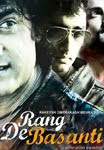If D.N. Bhatt had his way, every Indian flag purchased in the nation would provide income to Indian villages. Having said that, he can take pride in the fact that the flags he manufactures, aid this process to a great measure.
Mr. Bhatt owns Khadi Dyers & Printers (KDP), one of the two units in India licensed to manufacture the Indian Tricolour as per the specifications of the Bureau of Indian Standards (BIS).
Few are aware that the making of a good quality Indian flag is a process that adheres not only to stringent standards, but also retains the human touch at its core – the cotton cloth from which the flag is made, is hand-spun and hand-woven, also called Khadi.
Mr. Bhatt narrated a historical anecdote few would be aware of. “In the early 1950s, the Director General of the BIS, Mr. O.P. Khullar received a message from the then-President of India, Dr. Rajendra Prasad. He requested an important specification to be included in the standards for manufacturing the Indian flag – that it must be made of Khadi cotton cloth, hand-spun and hand-woven at the village level, thereby ensuring a stream of income to Indian villages.”
Every step of the manufacturing process is ruled by the quality standards as laid out by BIS. Mr. Bhatt elaborates, “Khadi cloth is sourced by the Khadi Village Industries Commission (KVIC) and it arrives at our workshop. Here, we test it for quality. Only the fabric that passes the standard will have the ISI quality stamp on the finished product. The fabric is then sent to a mill where it is dyed (saffron and green) and bleached (white) as per the standard shade card. The Ashok Chakra emblem is screen printed in dark blue on the white panels. The dyed, bleached and printed panels are then stitched. Once assembled with the rope and toggle, the completed flags are despatched to the Khadi Bhandars or outlets based on the quantities ordered.”
Mr. Bhatt details the standards maintained at KDP, “Our flags are subject to stringent tests for colour-fastness from sun and water. The corners of the flag are stitched diagonally to ensure strength when the flag flaps in the wind. Every intricate detail is ensured down to the groove that holds the rope in the toggle, the size of the rope and even the depth of hem on the flags. The most challenging process we have managed to master is the printing of the Ashok Chakra at the exact position on both sides of the flag.”
“Today, although people accord respect to the Indian tricolour, they end up buying the paper and plastic flags sold at traffic signals. While those also do contribute to someone's livelihood, citizens are not aware that buying a Khadi one has such economic significance for Indian village industries.” says Mr. Bhatt.
Flags of the BIS standard sizes are manufactured at KDP - the smallest being the table-top variety at 2 inches by 3 inches and the largest at a gigantic 14 feet by 21 feet. They are available at KVIC's Khadi bhandars or sales outlets across India with the ISI quality mark clearly branded on the 'duck' – the unbleached, uncoloured stem of the flag.
TRIVIA
- New Delhi is the biggest market for flags with most government departments are located in Delhi.
- The size of the state has no connection to the number of flags sold. Relative to its size, Madhya Pradesh has lower demand compared to say, Maharashtra or Rajasthan.
- A flag, if used every day for eight hours a day as in Government Agencies, will fray in a year. If it is used only for Independence Day and Republic Day celebrations, it will last for even ten years.
- While BIS ensures the quality of Indian flags, the Flag Code of India ensures that the Indian flag is accorded the respect befitting a national symbol. The Flag Code of India can be accessed at http://india.gov.in/knowindia/national_flag.php
- Arundhati Virmani's book, A National Flag For India traces the evolution of thought that went behind designing the Indian Tricolour.
(An edited version appeared in Culturama's August 2010 Issue)




